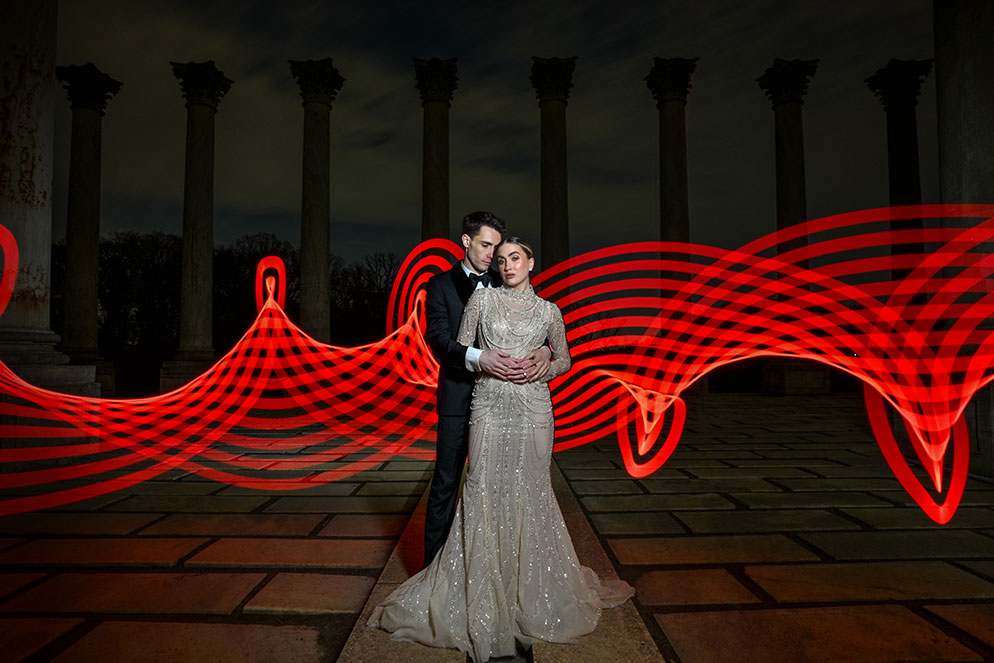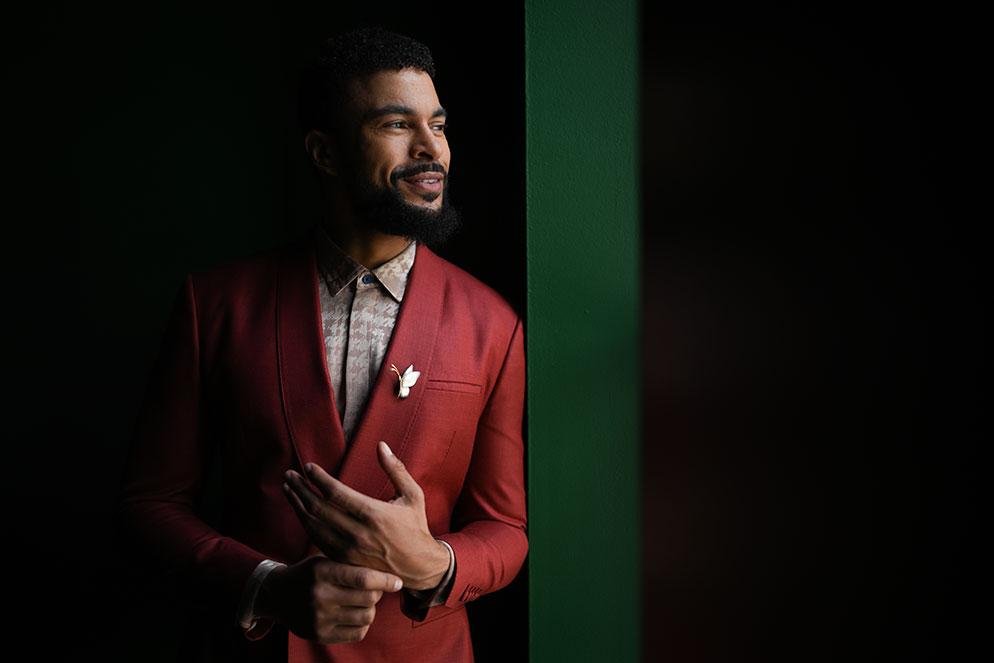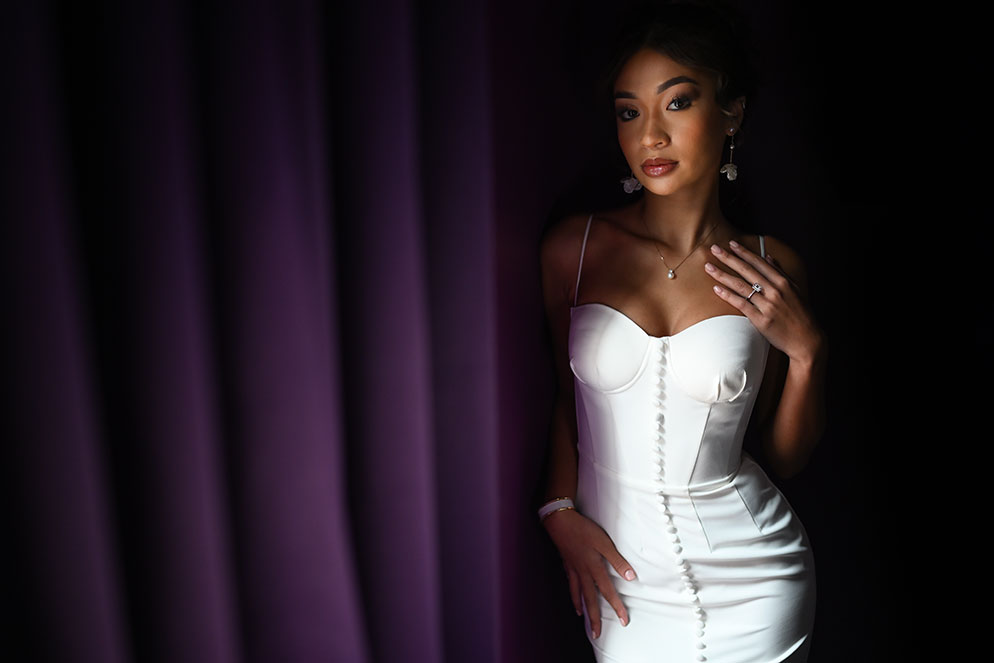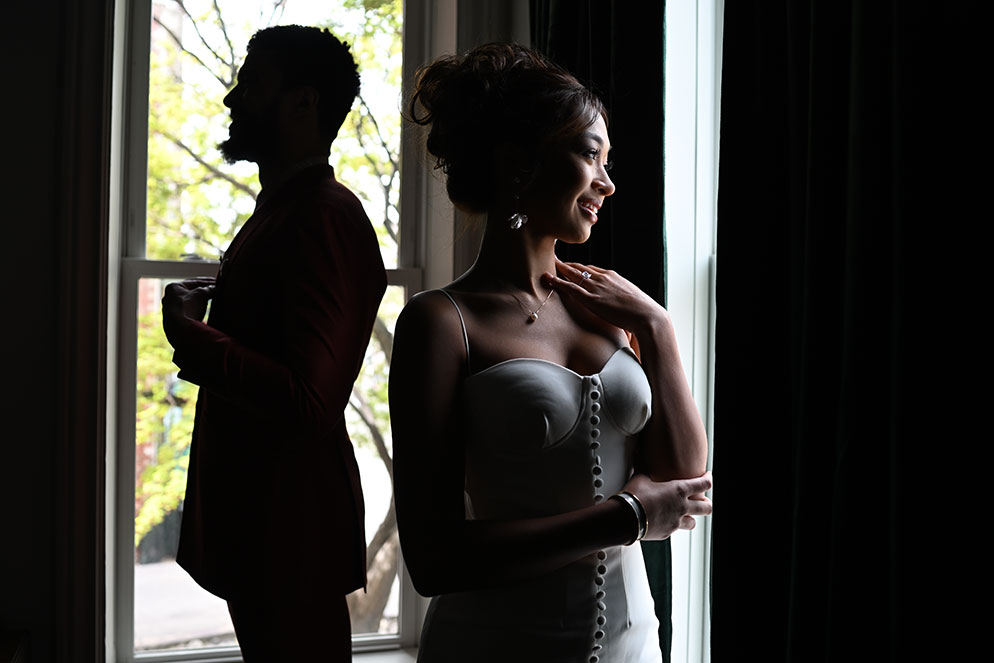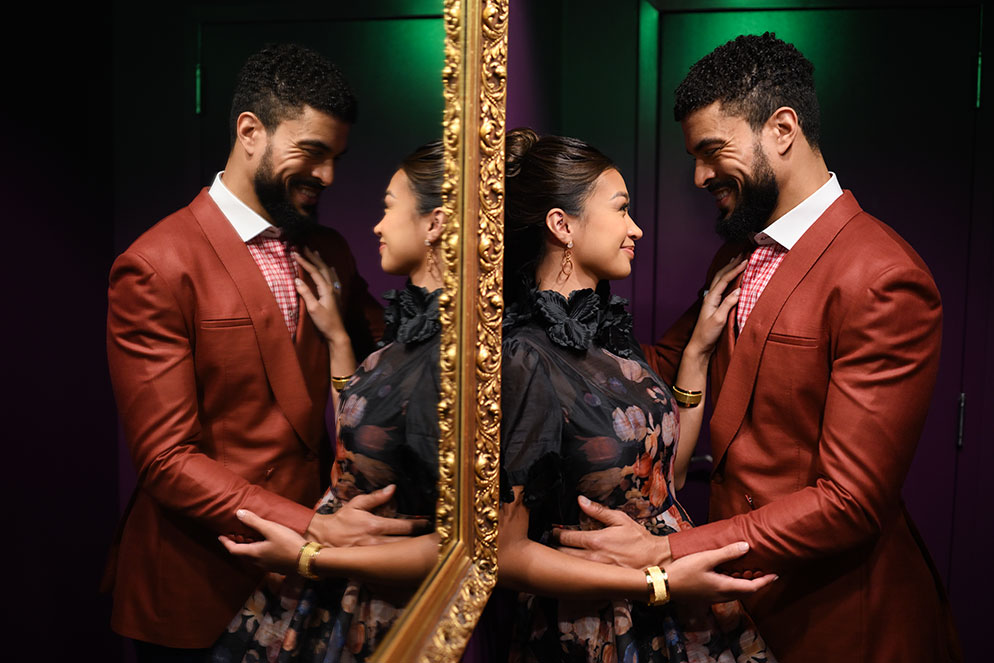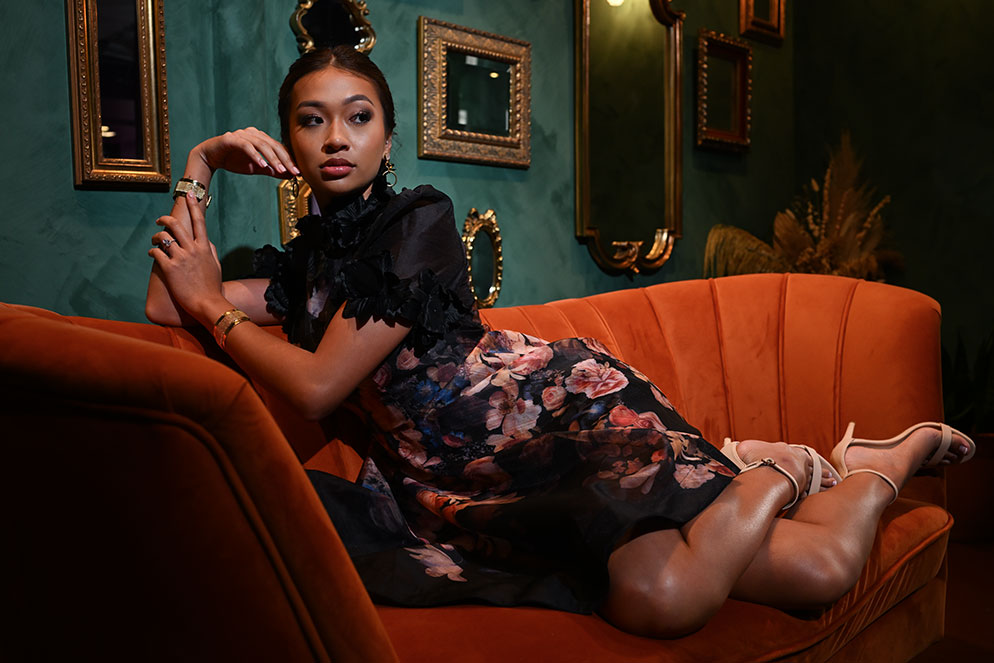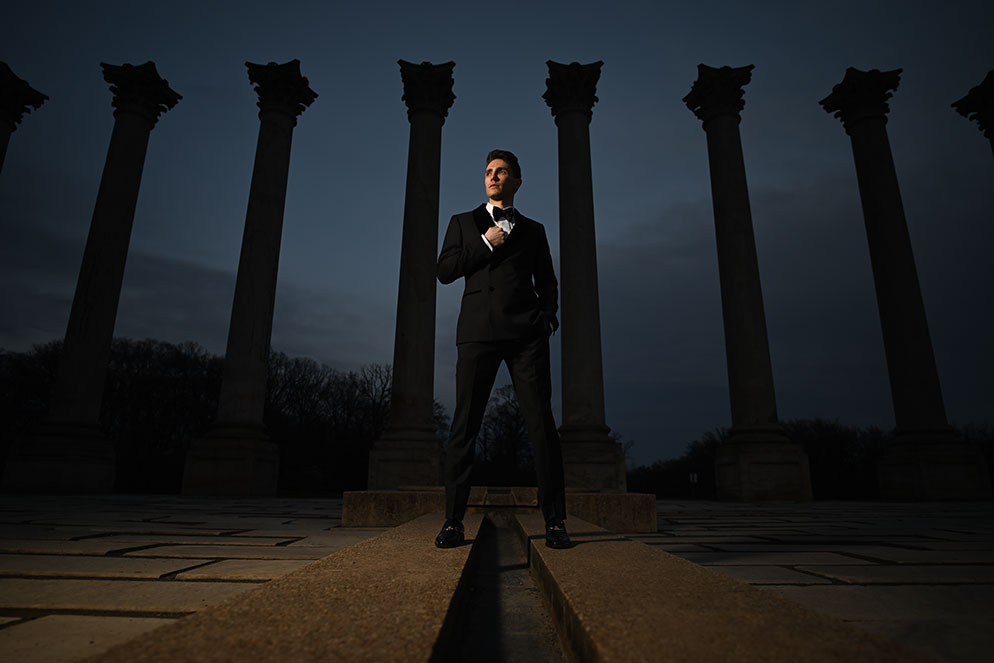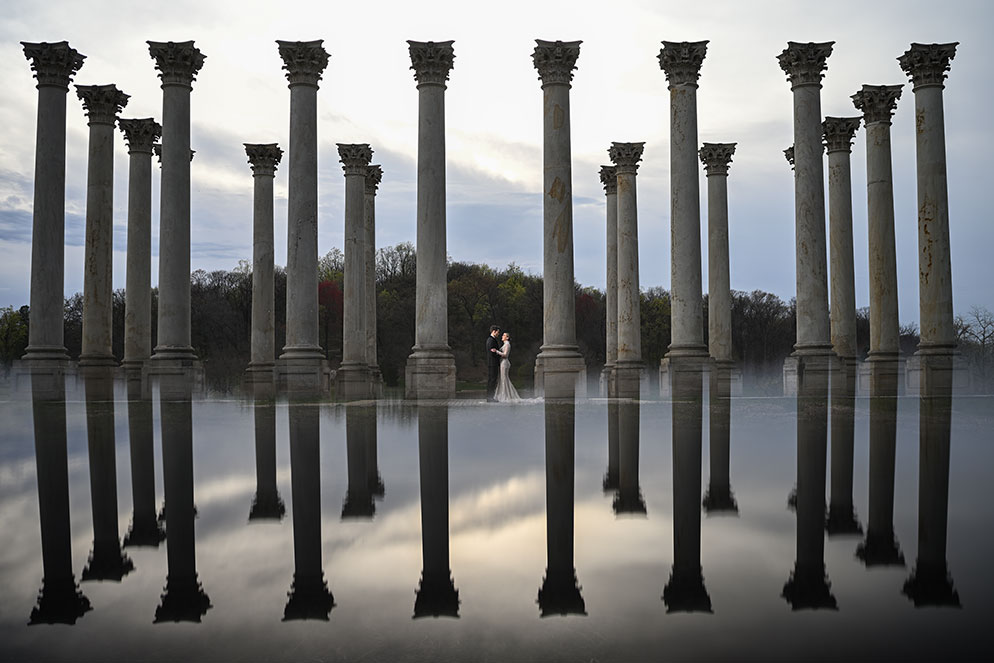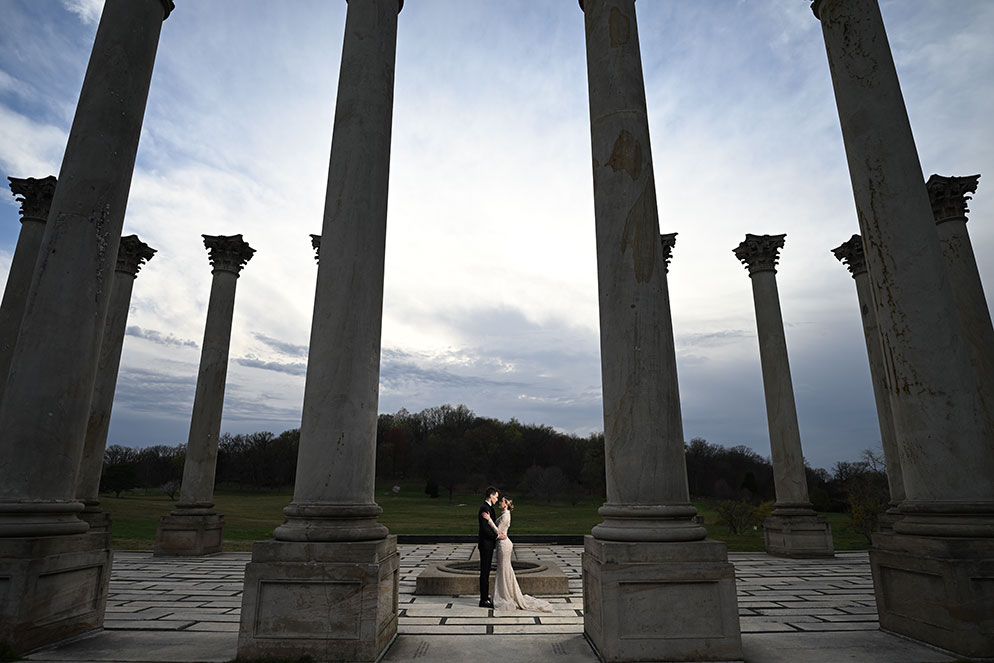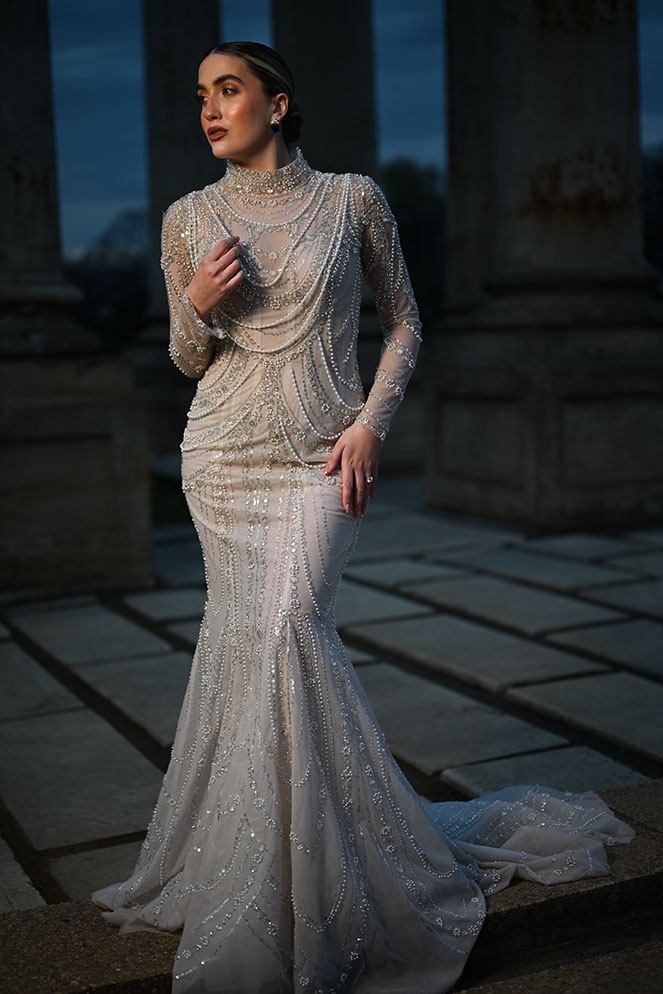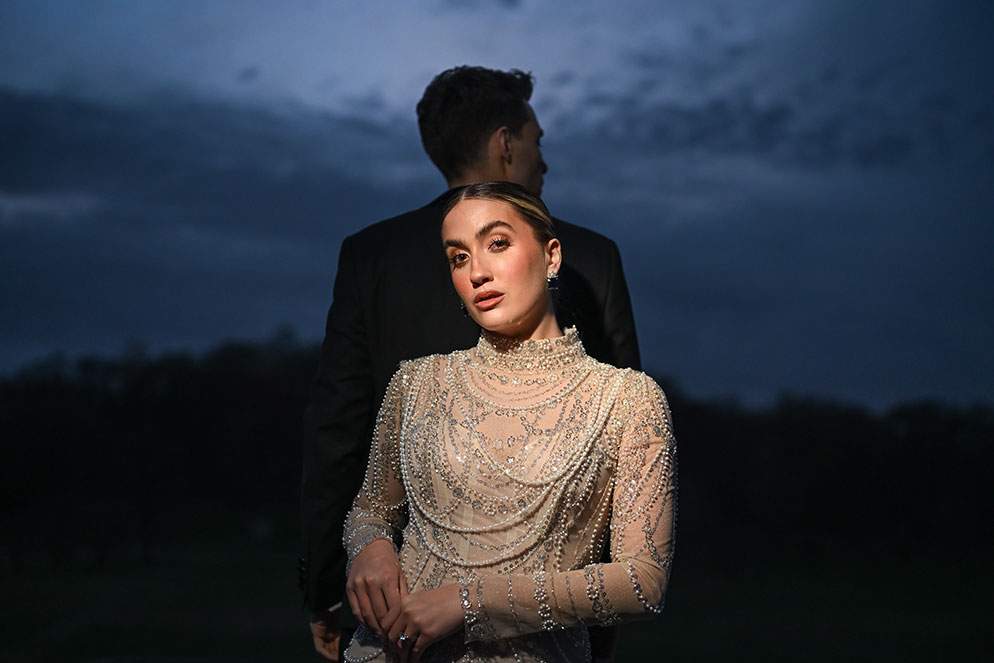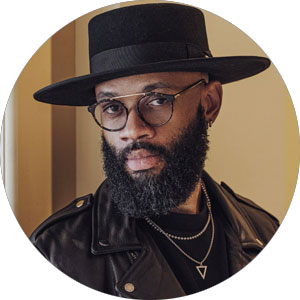Versatility Plus: How the “Forward Thinking” Z6III Helps Create Creative Images
Keys to Kanayo Adibe’s photography are inspiration, imagination and experience. Check out how the Z6III turned out to be a perfect fit for that creative trio.
Call it pre-visualization: A photographer arrives at a location and sizes it up for possibilities, and if that photographer is wedding and portrait photographer Kanayo Adibe, he’s considering light, colors, shapes, his compositional choices and how to direct his subjects so they’ll best play into what’s available to him.
A photo shoot venue offered different colors, decors and decorations—perfect for the kind of images Kanayo Adibe likes to make. Also perfect, the opportunity for an intriguing composition that hides the window providing all the light he needs, while shadows show only a part of the green wall. Z6III, NIKKOR Z 35mm f/1.8 S, 1/200 second, f/1.8, ISO 125, manual exposure.
Kanayo used natural light for his subject and a video light to show the curtain’s color. The Z6III previewed the exposure, handling tonal range, detail and razor-sharp Eye AF. Z6III, NIKKOR Z 35mm f/1.8 S, 1/400 second, f/1.8, ISO 1250, manual exposure.
Given Kanayo’s approach to photography—at his website he says it’s “artistic, photojournalistic and arguably cinematic”—he’s got a lot of variables to consider, and often not a lot of time to sort out the options. What he’s got on his side is experience, imagination and, for the photographs here, the Z6III, a camera that’s as versatile and responsive as he is.
When we spoke with him we were particularly interested in his website mention of “arguably cinematic.” No argument from us—we saw that immediately in his use of light and shadow, and in the intriguing ways he chose to compose his images.
The combination of partly-shadowed subject and backlit silhouette was made possible by two windows—one obvious, the other hidden from us at camera right. Kanayo favors this and similar setups when the elements align. He got this in one shot, the image file right-out-of-the-camera perfect. Z6III, NIKKOR Z 35mm f/1.8 S, 1/400 second, f/3.2, ISO 400, manual exposure.
“I always look for interesting things, and here I was able to play with the colors of the walls and, of course, the mirror,” Kanayo says. We say we also admire his creation of the image’s supporting arc. Z6III, NIKKOR Z 35mm f/1.8 S, 1/160 second, f/1.8, ISO 1600, manual exposure.
“It happened almost in reverse,” Kanayo explains. “When I started making pictures, I learned all the rules of composition, and then I started seeing compositions in real life, and then in films. I was seeing the things I was familiar working with, in still photography, and the films I saw them in, I enjoyed a little bit more. Those films became more than their story. There was an appreciation of the technical aspect—like Wes Anderson’s use of symmetry, or other directors’ ideas for composition, framing and use of contrast and light.”
Light is the key element in Kanayo’s photographs, and the Z6III was particularly impressive because of what it revealed about his efforts to manage and use it.
Kanayo used an off-camera flash at camera right, angled down for this image at one of the venue’s sets. “I like using one light—it’s easy to control and gives me almost my own directional sunlight to punch up color and also provides the shadows I love.” Z6III, NIKKOR Z 35mm f/1.8 S, 1/200 second, f/5, ISO 1250, manual exposure.
“One of the things people struggle with is being able to see highlights and shadows and knowing what they can make of them,” he says. “With the Z6III you can see the exposure, see the highlights and shadows and the patterns formed by them, and you can tell what’s exposed properly.”
Being able to “almost see your final exposure before you take the picture” makes it easier for him to deal with lighting—to make the adjustments and changes that help create creative images. “With the Z6III, you practically have the result right there in the viewfinder, the final photo before you take it, and that helps with everything—the composition, being able to change your position for framing, knowing exactly where you can tell your subjects to move. It’s like easy mode.”
Or you could call it a kind of previsualization.
Another noteworthy feature for Kanayo was the high refresh rate of the Z6III’s EVF [electronic viewfinder]. Kanayo refers to it in the video, and when we asked him about it he said, “There’s no lag. When things were moving, what was happening was what I was seeing and photographing—real life in real time.”
The Prime Advantage
From the file information included with the picture captions, you might think Kanayo is strictly a prime shooter, and up until recently you’d be right, as his lenses were all primes from 20mm to 85mm.
“My longest lens was the 85mm, which I generally use it not for portraiture but for reach when doing weddings. But I can’t always get close enough with the 85mm and having to walk toward the subject means calling attention to myself, so I recently added two zooms, the 24-70mm and 70-200mm.”
His reliance on primes for almost a decade was deliberate—and creative. “I learned that shooting prime lenses fosters creativity. I had to zoom with my legs, and If I had a 35mm lens on the camera and couldn’t move back, I’d find another way to take that picture—maybe by raising my camera or shooting low; I built that skill. Now I can go to zooms and make my job easier—but I won’t just zoom, I’ll zoom with intent.”
While he prefers telling the wedding story from the fly-on-the-wall perspective, for portraits within that story he’s a director. “I know where to place my subjects in the frame,” he says. “I play with a lot of shapes and lines, placing the subjects in positions that complement the elements, with no distractions.” He often favors bright spots so there’s contrast between subjects and the background, with little or no competition for attention. He also likes to position subjects in frames, like a doorway or an arch. “These are very distraction-free photographs,” he says. True, but with his skillful use of light, color and contrast, he can make them dramatic as well.
At twilight, amidst the columns, the off-camera flash provided illumination and Eye AF assured focus. Z6III, NIKKOR Z 50mm f/1.8 S, 1/250 second, f/1.8, ISO 125, manual exposure.
With the Z6III, you practically have the result right there in the viewfinder, the final photo before you take it, and that helps with everything.
The off-camera flash reveals details and provides the drama of the light/shadow contrast that the composition was designed to create. Z6III, NIKKOR Z 50mm f/1.8 S, 1/200 second, f/2.2, ISO 2500, manual exposure.
Future Frames
In addition to “arguably cinematic,” there was another quote, this one in the video, that we wanted to talk with Kanayo about. “Nikon makes cameras for creatives of the future,” he said. “Please elaborate,” we said.
“What I meant is that for its performance, the Z6III is a forward-thinking camera. First, it’s incredibly capable in so many ways, particularly for specific technical features. Low-light focusing, backlit focusing—I reviewed the images I took with it, and I didn’t have any misses. My specialty is low light, and I’ve heard people say that Nikon cameras create light when there’s no light. They say that because the cameras’ ISO performance makes a scene look brighter than it actually was.”
A 30-second exposure set on the tripod-mounted Z6III gave Kanayo time to move into the scene to paint them with his video light, then dash through again with a Pixelstick to add the color pattern. “When I got to the back of the camera this image had appeared.” May we add, “As if by magic”? Z6III, NIKKOR Z 20mm f/1.8 S, 30 seconds, f/16. ISO 100, manual exposure.
In addition, the Z6III’s super-bright EVF, which can be set for auto or manual adjustment, came in for special mention. “Even in areas that were very dark, I could see colors very well—it made them pop—and everything was a lot clearer,” Kanayo says. “At first it didn’t occur to me that I was getting extra help—I took it for granted. Then I realized why everything was so clear—the colors, the lines, even the shadows. It’s weird how sometimes technology goes unnoticed.”
Well, maybe not that weird. Maybe we previsualized the camera just that way.
Kanayo’s website, kanayoadibe.com, features selections of his wedding, couples and portrait photography. Click on Personal for a blog offering images from his “various personal projects and adventures.”

